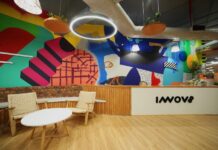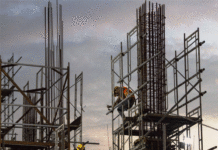Karan Adani, 25, recalls his early days in the family business in 2009. Most of the time was spent taking notes as he watched and learned at Adani Ports and Special Economic Zone Ltd (APSEZ) , India’s largest private port and owned by Adani Group.
“If someone asked me my name I would just say Karan and not mention the last name,” he says.
After about six months, his colleagues came to know that he was the eldest of the two sons of Gautam Adani, chairman of the $8 billion Adani Group.
“This did not change anything. I was not given any special treatment. In fact, I was not even a trainee for the first year. I got my appointment letter only in 2010.”
Of the two big infrastructure streams that Adani is involved with, Karan Adani has a clear preference for one—“ports excited me more than power”.
A graduate of Purdue University in the US, Adani spent the first two years in Mundra, travelling by train (he recently got permission from his father to fly), to understand the diverse portfolio at Mundra port—it handles all types of cargos including dry, liquid and container. He went on to learn the commercial side of things—resource planning, master planning, revenue models, etc.
Just a year after joining work, he had some experience of dealing with trouble. In 2010, all transporters in Kutch went on strike due to the poor roads in the region. As a result, all work, including shipments through Mundra, got stuck for three days. Adani called a meeting of the transport owners and convinced them to resume work while he got the government to repair the roads.
Apart from work, he follows Formula 1 and plays tennis and golf. He is married to Paridhi Shroff, daughter of Cyril Shroff, who runs one of the largest law firms in the country — Amarchand and Mangaldas and Suresh A. Shroff and Co.
Besides Mundra, Karan Adani has also worked on the Hazira and Dahej port projects. The Rs.2,000 crore Hazira port, which is expected to be as big as Mundra in berth size and in terms of cargo capacity, faced several challenges.
“It was a difficult port as the waters were not very calm and there were rail and transmission line problems. We had to do a lot of redesigning.”
India’s port sector has a great deal of potential because the country is so poorly served in this respect.
“All the ports in India put together would equal one port in Shanghai. The next 10 years are for India to grow from a deficit to surplus and this will help Indian ports business to grow,” Adani says.
He accepts that the Mundra special economic zone has not met expectations so far and is trying to rope in logistics, engineering, automobile companies and steel plants for the project.
Adani says he is has a long-term goal of making APSEZ a leading global port developer and operator.
“There are very few private global companies like Hutchison Port Holdings (HPH) in this space. Most of the companies in port business are terminal operators/developers. We would like to cover India first and for this we will add a few more ports. Globally, we are exploring options for acquiring greenfield or brownfield port projects,” he says



















